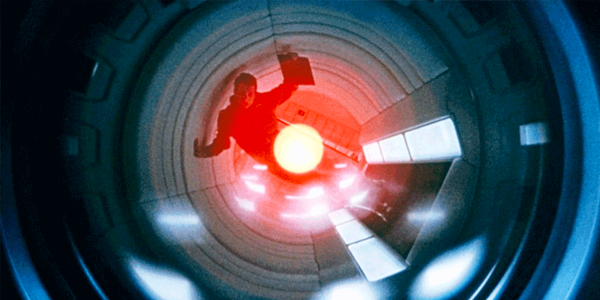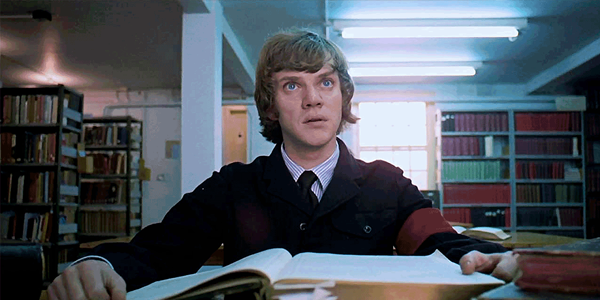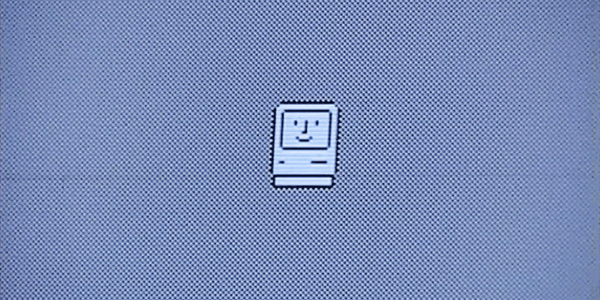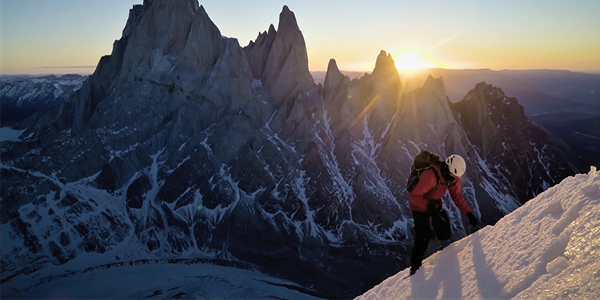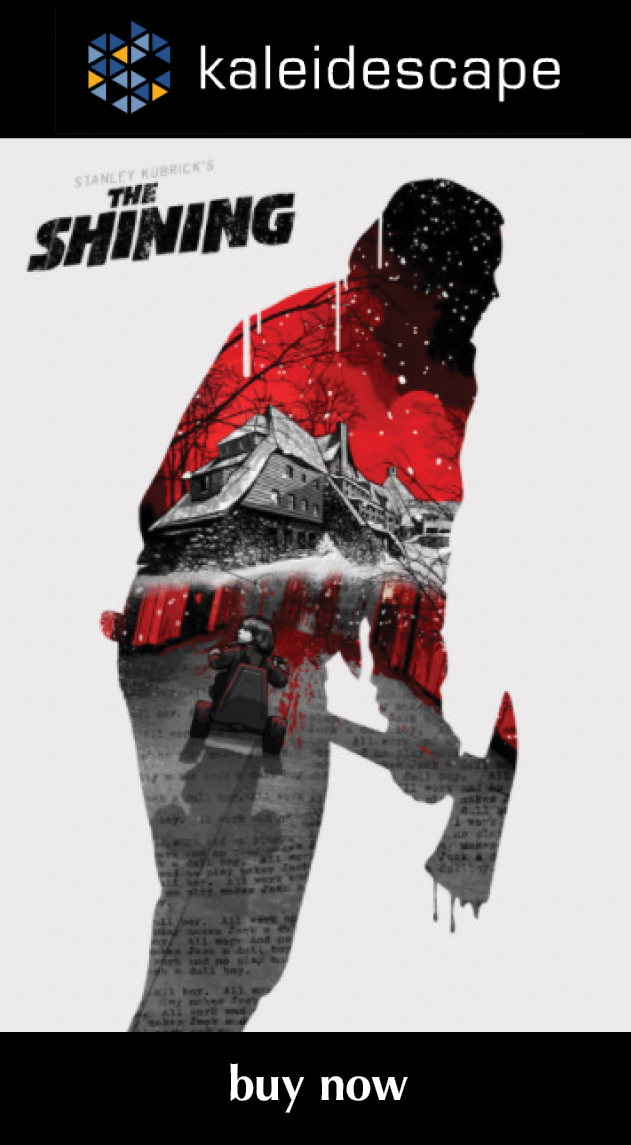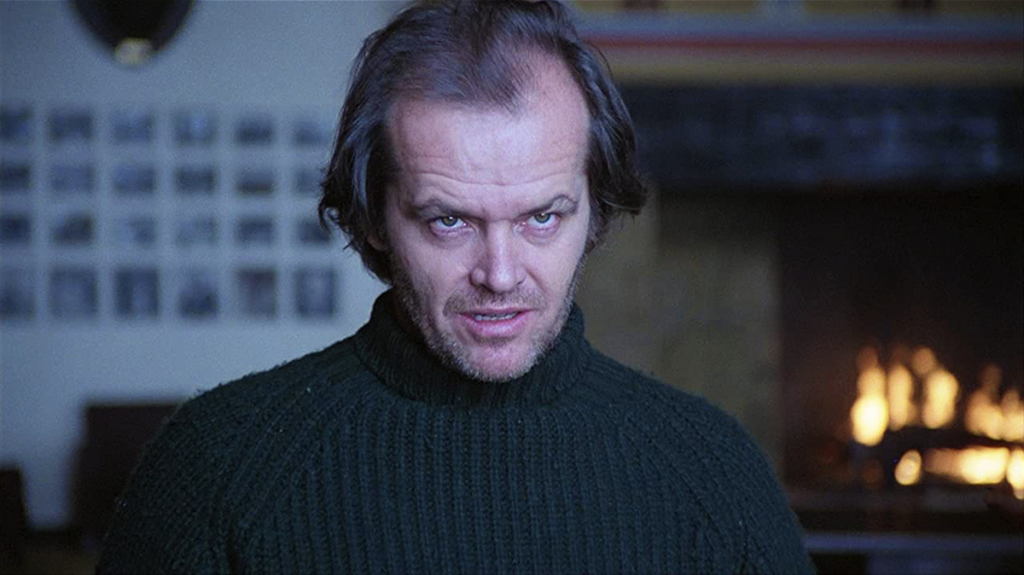
review | The Shining
The horror classic finally receives a transfer that matches—even beats—the experiencing of seeing it in a movie theater
by Michael Gaughn
October 7, 2020
The critics hated The Shining. Some of the more prominent, and dubious, ones put it on their “Worst of the Year” lists. Some pointed to the first Friday the 13th installment, released around the same time, as the future of horror and dismissed Kubrick’s effort as quaint and out of touch. Stephen King famously damned the film—then went on with his own adaptation to prove that he knows nothing about filmmaking.
The Shining has, of course, since become a classic. But films are usually deemed “classic” more for their ability to pander to mass taste than for any inherent worth. The more important question is: Is it Kubrick’s best film?
I’m not completely sure about that, but I would tend to argue yes. In The Shining, his technique is in perfect sync with his ambitions, his execution fully, inventively, and surprisingly realizes his themes, and he dives deep enough into the much-abused but still fecund roots of the culture and returns with enough gold to craft something that might still survive when almost every other movie has been forgotten. The Shining is so well done it makes even the best of Kubrick’s previous efforts seem a little callow.
There’s no point in hashing out its merits as a traditional horror movie. While he does deploy some conventional elements, Kubrick primarily pursues horror through other, more effective, means—by using the very nature of film technique to keep the audience uneasy and to pull them into the action against their will.
The most obvious instances are well known by now, the two most famous being seeing the hyper-realistic manifestation of the old woman rising out of the bathtub at the same time her cackling horror-movie double is already chasing Jack Nicholson from the room, and Nicholson asking Shelly Duvall “Which room was it?” only to have the film cut to a cold open of a Miami newscast. (Kubrick intentionally placed that cut at a reel change so the audience would think the projectionist had screwed up.)
Things like that and the infamous title cards makes you wonder “Is this supposed to be a joke?” while baffling you why it should be, which eventually induces a skittish sense of “I can’t trust anybody here.” Taking a puppet-master’s delight in messing with the audience, Kubrick’s cunning runs the gamut from puckish to perverse, dancing right up to the edge of sadistic.
More relevant for our purposes is his astonishingly successful effort to transport the viewer into the film. It’s a cliché to say that The Overlook is a character in The Shining, but going there kind of misses the point. Kubrick took the strategies Roman Polanski used in Rosemary’s Baby to give The Black Bramford a palpable presence and seriously upped the ante by grafting them onto the medieval Art of Memory to achieve not just the sense of being lost in the film but trapped inside a labyrinthine hotel with a madman.
But anyone who’s only seen The Shining at less than 4K resolution—even on a cinematic home theater screen—has never had this experience—which means they’ve never really seen this film. All of which is a longwinded way of saying that Kaleidescape’s 4K HDR release is the first time anyone has had the chance to experience The Shining at home with the full impact Kubrick intended.
That impact hinges on a number of things, but primarily on accurately reproducing the naturalness of the artificially created outdoor light, matching the resolution of the original film print so all of the detail—especially in the landscape shots—is faithfully reproduced, and having enough resolution so the movie can be experienced from the proper viewing distance, without distractions.
That last point is the most key: Sit at the right distance, and you begin to experience The Overlook the way the characters do. You accurately feel the scale of both the large and smaller spaces and can mentally navigate the corridors the same way they do—even when they’re not around. After a while, you begin to have this sensation independently of the action on the screen. You feel haunted, in real-time—which is what makes the film uncanny and horrific in a way no other movie has been able to achieve.
None of that would be possible at home without this transfer, which is the most beautifully done, and faithful, 4K HDR translation I’ve seen of any movie. Nothing is overemphasized; all of it is in the service of the film.
And you can feel the full impact from the very first shot, where the faint ripples on the surface of the lake create the sense the small island is rushing toward you, and where the detail deep in the landscape makes the shot seem almost 3D—an effect maintained throughout the opening sequence, where the images have so much detail in the distance that they border on vertiginous. With HDR, the landscapes seem not just grand but crisp and cold and almost nasty.
This carries over to the interiors, where the ability to perceive even the smallest details reinforces the reality of The Overlook, adding to that sense of being trapped within it. I was especially awed by the wide shots of the gold ballroom, where you can clearly see the variations in the metallic surfaces and on the parquet walls way in the back of the room, and where all the lighting sources and reflections are properly balanced without being blown out. The movie hasn’t looked this good since the pristine prints from its initial release.
The quality of the transfer is just as important in the many striking closeups, with their natural skin tones and often uncomfortable intimacy. Letting yourself get lost in those shots helps reinforce the sense of being a complicit member of the film’s highly dysfunctional family.
I really can’t fault the transfer for anything—except two somewhat inadvertent things. The HDR is so revealing that it gives away how Kubrick was able to achieve the seemingly impossible overhead shot of Wendy and Danny walking through the middle of an improbably elaborate version of the hedge maze. And Kubrick relied on the random variations of film grain and the motion of the film through the projector gate to sell the shot of Jack sitting frozen in the snow. Seen as it is here, with no film or grain movement, it’s all too obviously a photo still.
I don’t mean to shortchange the film’s soundtrack, but the images are so beguiling that you have to force yourself to really focus on what’s going on there. First off, the music score is to be savored. Without question the most effective use of existing cues in any film ever, Kubrick so carefully wedded and molded its elements that most viewers probably assume it’s an original score.
As for chest-thumping explosions, window-rattling gunfire, and the other aesthetically dubious bombast we’ve come to expect from a contemporary surround mix, there’s none of that here. Kubrick was too much a master of his craft to resort to gratuitous jolts. Intent on keeping you inside the action, he wouldn’t have wanted viewers thinking about the potential seismic damage to their homes.
The DTS-HD Master Audio 5.1 mix is as deft as the visual transfer, enhancing the atmospheric sense of inevitability without drawing attention to itself or doing anything that would make you wince. The best stuff is the most subtle—the contrasting sonic signatures of the hotel’s rooms, lobby, ballroom, and other spaces, and the first hints, and then rising presence, of the winter storm. It’s like a perverse twist on New Age pablum, using the sounds of nature to lull you into a nightmare.
I feel obligated to mention the extras while kind of dreading it. To save the best for first, there’s “The Making of The Shining,” a documentary by Kubrick’s daughter Vivian that Kubrick suppressed during his lifetime but couldn’t keep from popping up from time to time on YouTube and elsewhere. Because of his daughter’s unrivaled access and her skill, even at 17, as a filmmaker, it’s really the only portrait we have of Kubrick as a filmmaker. It’s also surprisingly revealing about Nicholson, Duvall, and Danny Lloyd, and the whole dynamic on the set. If you’re even casually interested in Kubrick or The Shining, it’s a must-see.
“Wendy Carlos, Composer,” available only on the DVD version, is mildly interesting for both the casually curious and for students of Carlos’ work. The audio commentary, also only available on the DVD download, is a very mixed bag. Steadicam inventor Garrett Brown has a decent number of insightful remarks about his work on The Shining, but Kubrick biographer John Baxter is nothing but a train wreck. You’d think a biographer would be strong on details, but he gets so much wrong you get the sense he’s just making it all up as he goes along. And his Felix the Cat recounting of the action while we’re watching it play out on the screen is so dumb and pointless it becomes funny after a while. It’s like he’s narrating the film for a group of incredibly gullible blind people.
“View from the Overlook: Crafting The Shining” and “The Visions of Stanley Kubrick,” by the same team that perpetrated Full Metal Jacket’s “Between Good and Evil,” manage to neutralize the impact of any interesting comments by various actors, directors, studio executives, and authors through their appallingly inept editing of footage from the film. Like the Full Metal Jacket travesty, they’re a textbook example of what happens when you give people with no discernible taste or talent free rein to butcher brilliant material.
But don’t let any of that cause you to hesitate to download this film. This release of The Shining will quickly become the jewel of any serious film collection. But it’s not there to be revered but watched. This film’s impact hasn’t diminished a jot since the day of its release. And this 4K HDR version takes us all the way back to that first day without compromise. It’s kind of like the movie just keeps repeating itself in an infinite loop without ever aging. Right?
Michael Gaughn—The Absolute Sound, The Perfect Vision, Wideband, Stereo Review, Sound & Vision, The Rayva Roundtable, marketing, product design, some theater designs, a couple TV shows, some commercials, and now this.
PICTURE | Kaleidescape’s 4K HDR release is the first time anyone has had the chance to experience The Shining at home with the full impact Kubrick intended. It hasn’t looked this good since the pristine prints from its initial release.
SOUND | The DTS-HD Master Audio 5.1 mix is as deft as the visual transfer, enhancing the atmospheric sense of inevitability without drawing attention to itself or doing anything that would make you wince.
© 2025 Cineluxe LLC


